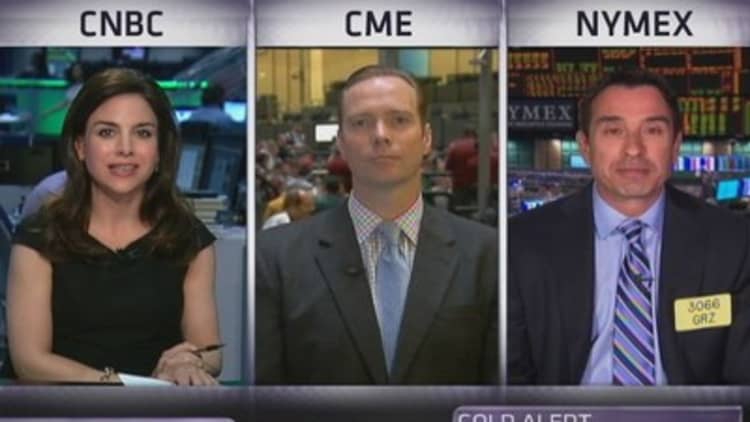With multiple investment banks signposting the end of the commodity supercycle, a World Bank director has warned developing countries that have benefited from the surge to protect themselves against a price crash.
Marcelo Giugale, the World Bank's director of economic policy and poverty reduction programs for Africa, told CNBC that states which have gained from the commodity boom should prepare for a slump.
"We don't want another wasted opportunity," he said. "This time around, things should be done differently. The material bonanza has the potential to become a human bonanza – whereby the standard of living for many people across these developing countries can be raised."
The high prices of commodities, such as industrial metals and oil, have boosted the revenues of countries rich in these resources. But notoriously volatile commodity markets have had catastrophic consequence for countries in the past. The so-called Commodity Crisis of the 1980s saw countries in Latin America and Africa battle financial, social and political instability, following rapid, commodity-driven expansions.
(Read More: Is It All Downhill for Commodity Currencies?)
Economists describe the apparent pattern in these price booms and busts as the commodity supercycle, with decades of rising prices followed by a crash.
Economics' Higgs Boson
Last year, Columbia University's Bilge Erten argued there have been three complete supercycles of between 30 and 40 years: the first peaking in 1917, the second in 1951 and the third in 1973.
We are in the midst of the fourth cycle, she said, which began at the start of the century and is driven primarily by the industrialization of China.
"It is not clear how long this cycle is going to be," Erten told CNBC. "Overall, we found that supercycles have between 15 and 20 years of expansion. We've had about 10 years of expansion since 2000 so we have maybe five more years to go if this cycle fits the pattern of previous ones."
(Read More: Brazil's Rate Hike Harks Back to 2011, Without the Boom)
But a number of economists – including Giugale – are far from convinced that these supercycles even exist.
"The commodity supercycle has been to economics what the Higgs boson has been to physics – all theories point towards their existence but we've never been able to see it," Giugale said.

China's Appetite
The rate of growth in China, the world's largest consumer of industrial metals, would be crucial to prices, Giugale added.
Until recently, China had seen decades of unprecedented growth, driving up the price of commodities amid increasing demand.
But the world's second largest economy disappointed in the first quarter of this year, growing by just 7.7 percent, from 7.9 percent in the previous three months. It followed the slowest rate of annual growth in 13 years in 2012, and last week, the International Monetary Fund cut its 2013 growth outlook for China from 8 percent to 7.75 percent.
The accompanying slowdown in China's appetite for commodities has put downwards pressure on their prices, with the cost of almost all of the main traded commodities falling in the first quarter of this year.
(Read More: 'Rude Shock' Ahead for Commodity Currencies: Pro)
One striking example is copper, which has slipped by around 16 percent over the year to date. Three-month copper on the London Metal Exchange slumped to an 18-month low of $6,762.25 a tonne in April and was trading at around $7,335 on Monday morning in London.
Dramatic price slumps like this have led some analysts to claim the commodity supercycle is coming to an end. Last month, Citigroup's commodities team said 2013 would be the year in which the "death bells ring" for the supercycle, and last week, Saxo Bank's chief economist said the cycle is "winding down."
The Middle of the Storm
This potential change to the commodity landscape should motivate countries to put their fiscal houses in order, Giugale said.
"They should sort out government accounts, not run large deficits and have a large cushion available to provide more social protection and assistance," he said. "They should also allow their central banks to fight the inflationary pressure that a crisis like a crash in prices might generate. These two macroeconomic pillars, to me, are sacrosanct."
The prioritization of investment was also key, Columbia University's Erten said.
(Read More: Commodity Super Cycle Is Dead: Citi)
"It's important for the countries to save part of the commodity boom and invest it in new industries, such as the services sector or manufacturing."
Chile was one of the few countries succeeding in saving the supercycle's windfalls, according to Erten; but most were not.
"Even in South Africa - the continent's most developed country - the majority of industrial policies are pushing for more metal production," she said.
"It's even worse in less-developed African countries. There are very few attempts to diversify, which is really bad because relying on high commodity prices for long-term growth is subjecting economies to very volatile swings."
But Giugale stressed that even though commodity prices were slipping, demand remained high, meaning that developing countries' fiscal revenues should hold up for a while longer.
Being prepared is crucial, he added. "Developing countries don't want to have to deal with issues like this right in the middle of a storm. It's like worrying about your house catching fire when it's already burning."
—By CNBC's Katrina Bishop. Follow her on Twitter @KatrinaBishop.


